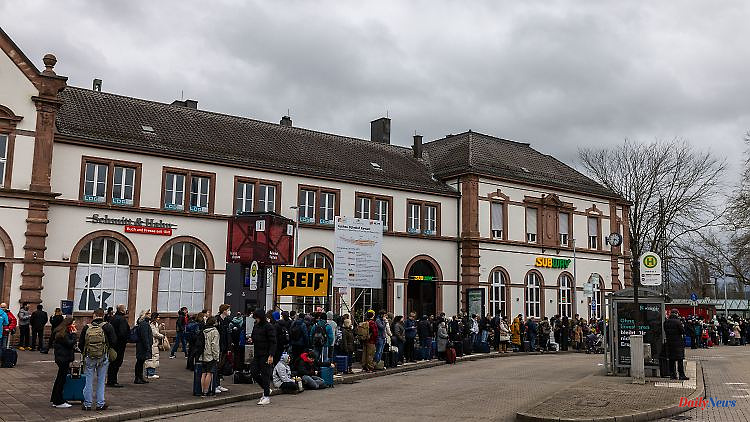Construction workers in Baden-Württemberg come across a 250-kilogram World War II bomb. During the defusing, the area must be evacuated within a radius of one kilometer. The A5 is temporarily closed, and nothing works on the nearby railway line for hours. ICE trains on the way to Basel are also affected.
During excavations on Friday, an excavator driver found a World War II bomb near the Karlsruhe-Basel railway line. Deutsche Bahn interrupted all train traffic in Rastatt at noon, which also affected ICE. Specialists from the explosive ordnance disposal service examined the explosive device, which weighed around 250 kilograms, and came to the conclusion that it had to be detonated in a controlled manner.
For this purpose, the area around one kilometer around the site was evacuated. About 5000 citizens were affected. At around 11:15 p.m., the police reported that the dud had been blown up. The controlled demolition was necessary because, according to the experts, the 80 centimeter long bomb was in such a bad condition that it could neither be defused nor transported, explained Mayor Arne Pfirrmann from the Free Voters, who is responsible for security and order. The Autobahn 5 in the Rastatt area was also temporarily closed.
Trains from the direction of Karlsruhe ended or started in Rastatt at noon, those from the direction of Offenburg ended/started in Baden-Baden, as reported by Deutsche Bahn. This affected local and long-distance traffic. The shuttle service was taken over by buses. After the blast, the railways checked the tracks and then released the route again. Long-distance and local traffic could run as planned on Saturday, a spokesman said shortly after midnight.
With loudspeaker vehicles, emergency services asked people in the evening to leave the restricted area. Alternative options have been created for those affected who cannot stay with friends or acquaintances. After the evacuation was complete, a helicopter with a thermal imaging camera checked that no one was there. Shortly after midnight, the Offenburg police reported via Twitter that after the bomb had been successfully detonated, all closures had been lifted and residents were allowed to return to their houses and apartments. The A5 has also been reopened to traffic.
Even many decades after the Second World War, bombs keep popping up during construction work. On average, around 1,300 tons of ordnance are still found nationwide every year. Hundreds of duds are defused. Most date from the period 1942-1945, when Germany was bombed from the air. It is unclear how much ammunition is still underground. According to the regional council in Stuttgart, 100,000 tons of dropped ammunition fell during the war in Baden-Württemberg alone, of which 10 to 15 percent were not detonated. Most defuses are uncomplicated. Sometimes buildings have to be cleared and streets closed.












